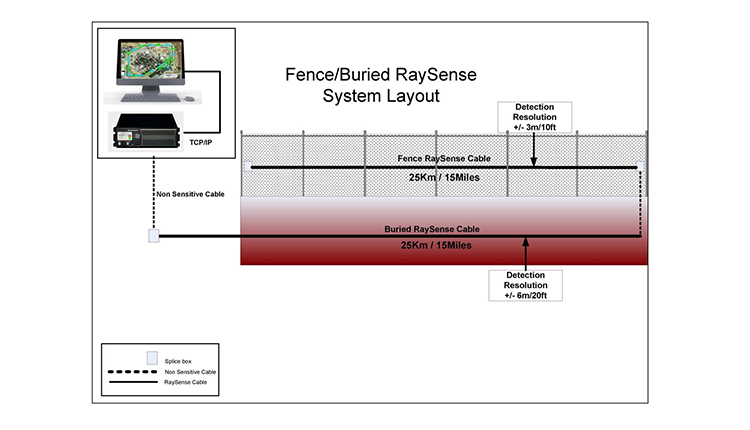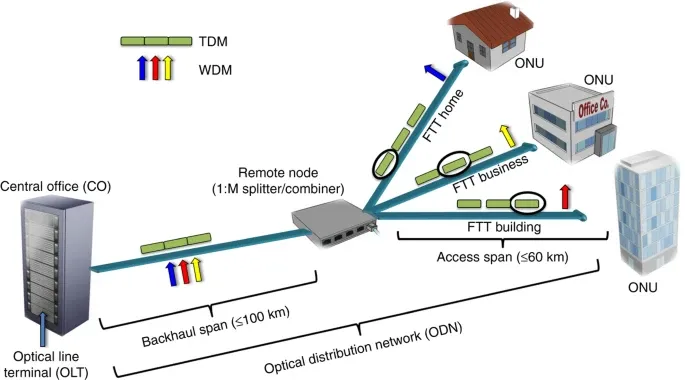Why Fiber Optic Protection Equipments Are the Future of Security
The transition to fiber optic safety systems notes a considerable advancement in the realm of defense, driven by their exceptional information transmission capabilities and durability to outside interferences. As the landscape of safety and security advances together with emerging modern technologies such as AI and IoT, the possibility for fiber optics to improve and redefine protection facilities ends up being progressively noticeable.
Advantages of Fiber Optic Equipments
One of the primary advantages of fiber optic systems is their premium bandwidth capability, which helps with the transmission of large volumes of information over fars away without significant loss. This characteristic is especially advantageous for protection applications that need the continual monitoring and transfer of high-def video clip feeds, sensor data, and various other critical information. Fiber optics can accommodate the expanding needs of modern-day security systems, guaranteeing that information remains intact and reputable.
Additionally, fiber optic cable televisions are less susceptible to electromagnetic interference, which can be a substantial concern in settings with various electronic tools. This resistance improves the stability of the information being transmitted, thus reducing the danger of data violations or system failures. Additionally, fiber optic systems are naturally much more secure than traditional copper cables, as tapping into a fiber optic line without detection is extremely tough.
The toughness of fiber optic wires also contributes to their allure. They are resistant to ecological factors such as moisture and temperature level variations, minimizing maintenance costs and enhancing system long life. On the whole, these benefits placement fiber optic systems as a robust and reliable choice for modern safety facilities, making sure reliable and safe and secure information transmission.
Enhanced Information Transmission Rate

The ability to transmit huge amounts of information rapidly helps with the seamless integration of high-definition video feeds and progressed analytics. Protection systems can now refine and assess info in real-time, improving feedback times and situational recognition. Furthermore, fiber optic connections sustain longer transmission ranges without deterioration of signal high quality, making them optimal for expansive protection networks.
The raised speed of fiber optic systems not only improves the performance of security operations yet also minimizes latency. This is especially crucial in critical circumstances where prompt decision-making can stop protection violations or minimize possible risks. As organizations remain to focus on safety and security and performance, the need for rapid and dependable data transmission will unquestionably solidify fiber optic systems as a foundation of modern protection infrastructure.
Resistance to Interference
Fiber optic security systems regularly demonstrate outstanding resistance to electro-magnetic interference, an important advantage in environments susceptible to digital sound. Unlike typical copper cords, which can be negatively impacted by magnetic fields, radio frequency interference, and various other forms of electrical disturbance, fiber optic cables utilize light to transmit data. This intrinsic residential or commercial property ensures that the signals continue to be clear and unaltered, regardless of surrounding digital activity.
The use of glass or plastic fibers in fiber optic technology develops a barrier against disturbance, permitting reliable information transmission even in tough circumstances such as industrial centers, urban locations with high electronic web traffic, or places near radio towers. This characteristic significantly minimizes the possibility of signal deterioration or loss, making fiber optic systems particularly ideal for safety and security applications where integrity and precision of data are vital.
In addition, this resistance to disturbance boosts the overall efficiency and integrity of safety systems, ensuring that monitoring and alert systems work effortlessly. In a world where safety and security is progressively endangered by innovative modern technologies, the strength of fiber optic systems attracts attention as a critical feature, strengthening their status as a crucial part of modern-day safety and security framework.
Cost-Effectiveness With Time
Substantial price financial savings can be achieved with time with the implementation of fiber optic protection systems. While the first investment might appear higher contrasted to traditional copper-based systems, the lasting monetary benefits emerge with lowered operational and maintenance expenses (fiber security). Fiber optic cords are naturally extra long lasting and much less susceptible to ecological factors, which converts to lower replacement and repair work expenditures over their lifespan
In addition, fiber optic systems need much less power to run, which even more reduces power expenses. Improved information transmission capacities enable fewer repeaters and amplifiers, reducing tools financial investment and streamlining installment see it here procedures. The Source scalability of these systems likewise contributes to cost-effectiveness, as companies can expand their safety infrastructure without sustaining considerable additional expenses.
An additional element to take into consideration is the increased performance in surveillance and feedback abilities that fiber optics give. Boosted real-time information transmission can bring about quicker occurrence feedback times, possibly mitigating losses and liabilities linked with safety breaches. Altogether, the long-term benefits of fiber optic safety and security systems not just validate the initial expenditure but additionally position them as an economically prudent selection for companies looking for durable protection options.

Future Innovations in Protection
Advancing innovations are set to reinvent security systems, integrating man-made knowledge (AI) and artificial intelligence to boost danger detection and action capabilities. These advancements will allow safety systems to analyze large amounts of data in real-time, identifying patterns and abnormalities that indicate prospective hazards. This positive strategy will certainly allow faster decision-making and more reliable case responses.
In addition, the unification of the Internet of Things (IoT) is leading the way for interconnected safety devices, offering thorough surveillance and monitoring. Smart sensing units can relay info concerning environmental changes, while automated notifies can inform security personnel promptly of questionable tasks.
Additionally, the evolution of biometric modern technologies will certainly even more go to my site bolster protection mechanisms. Face recognition, finger print scanning, and retina recognition are becoming a lot more advanced, offering layers of verification that are difficult to bypass.
Verdict
Finally, fiber optic protection systems represent a substantial advancement in security technology, providing exceptional information transmission rate, resistance to electro-magnetic interference, and long-term cost-effectiveness. As the need for innovative security remedies proceeds to grow, the assimilation of optical fiber with emerging innovations such as AI, IoT, and biometrics will even more enhance safety and security frameworks (fiber security). The mix of these innovations will certainly make sure a more protected and receptive environment, strengthening optical fiber as a cornerstone of future security systems